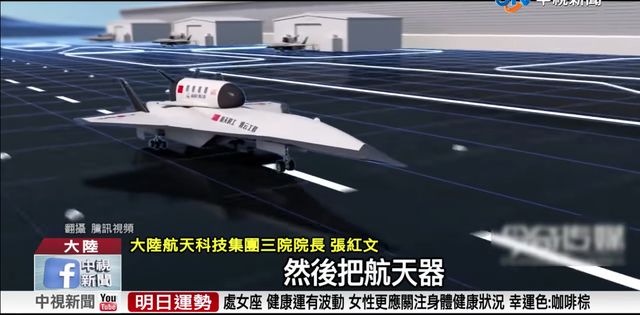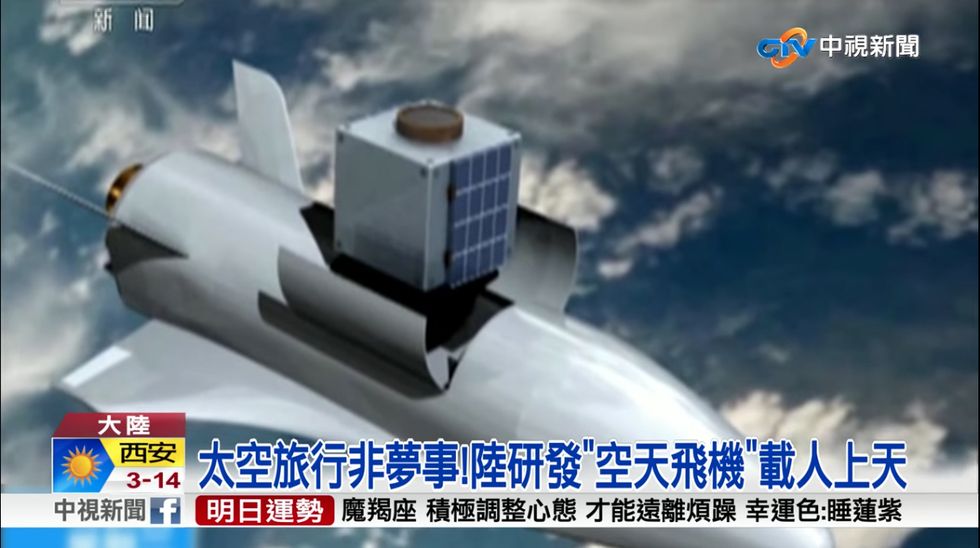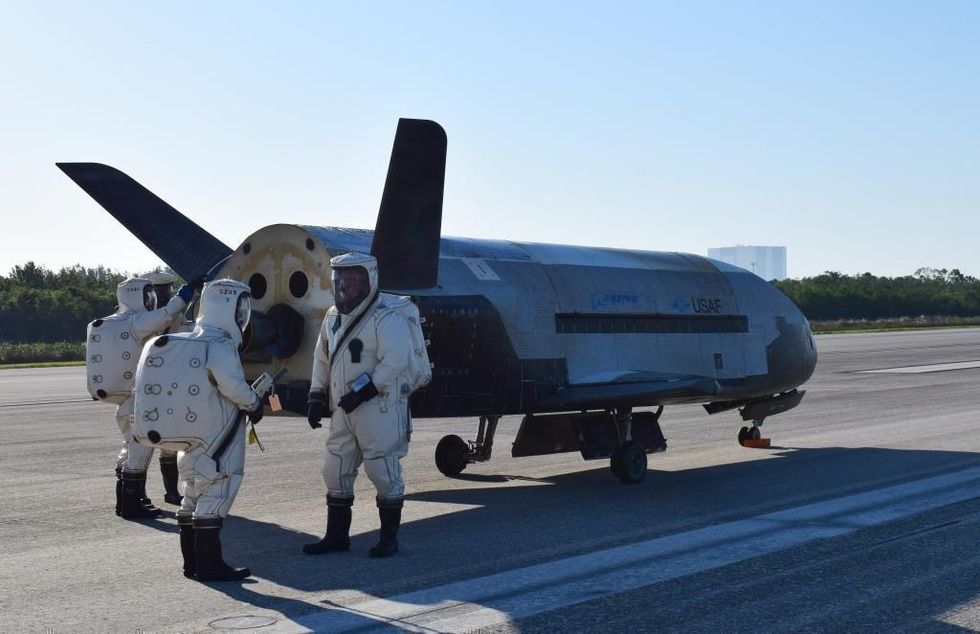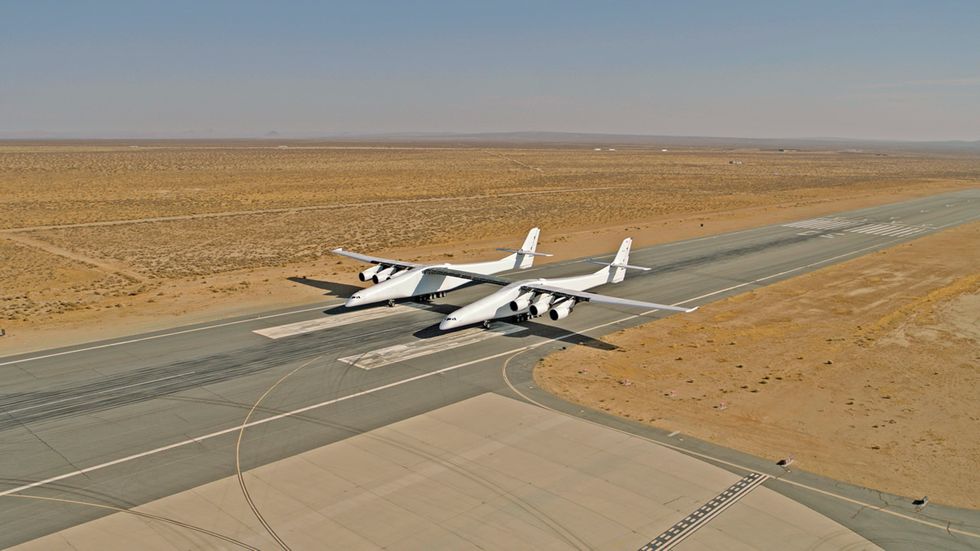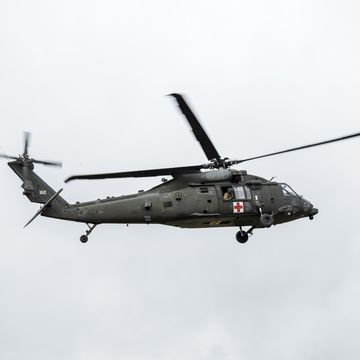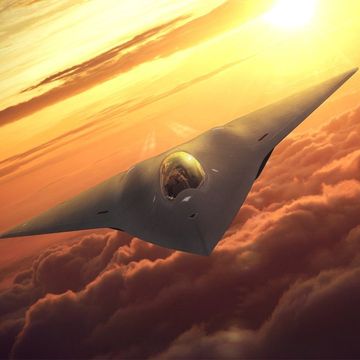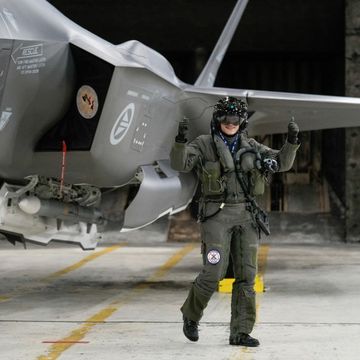China is reportedly developing a reusable spaceplane capable of delivering cargo to Earth orbit. The unnamed spacecraft appears similar to the U.S. Air Force’s X-37B space plane and likely has the same missions. However, it does differ from its American cousin in some key respects—at least for now.
Chinese state television recently ran a segment describing a new spaceplane under development, comparing it to the American X-37B. Operated by the U.S. Air Force, the X-37B is something of an unmanned space truck, carrying classified payloads into low-earth orbit and staying there for up to 700 days at a time. The X-37B is lofted into orbit by a United Launch Alliance Atlas V rocket using Russian-supplied RD-180 liquid fuel rocket boosters.
The Chinese spaceplane, by comparison, looks a bit different. It appears to be unmanned and close to the X-37B in both size and basic shape. Unlike the X-37B, the Chinese spaceplane will be carried on the back of what appears to be some kind of supersonic unmanned mothership. Mothership and spaceplane would fly to the edge of space, whereupon the spaceplane would separate and use an onboard rocket engine to reach low earth orbit. The mothership, having released its payload, returns to the spaceport and readies for the next mission.
Another difference is that the Chinese spaceplane appears to carry a smaller payload. This is likely a consequence of the spaceplane needing its own built-in engine to take it the rest of the way into space. The X-37B, by contrast has a relatively small engine designed only for maneuvering in space and de-orbiting.
The CGI concept video prompts some interesting questions. Why, for example, does the mothership appear to be some sort of sleek supersonic/hypersonic aircraft with what looks like ramjet engines? Paul Allen’s enormous, awkward-looking Stratolaunch aircraft is also meant to carry small rockets to the edge of space but uses six Pratt & Whitney 4056 engines generating 340,000 pounds of thrust to lumber its way there, not two zippy engines. In other words, it’s not the speed of the mothership, but lifting capacity that counts. Then again, the stealthy mothership could just be artistic license on the part of the animator. (The spaceplane, after all, is depicted with windows.)
The spaceplane is currently under development by the China Aerospace and Industry Corporation, or CASIC. Globalsecurity.org describes CASIC as a “high tech enterprise” directly controlled by the Chinese government that includes seven research institutes, two research and production bases, six listed companies, and about 600 enterprises and public institutes. It is subordinate to the General Armaments Department, People’s Liberation Army. CASIC’s primary area of expertise is rockets, missiles, and satellites, from satellite-based internet to anti-ship cruise missiles.
The video shows a date of 2030, which is probably about right. China doesn’t have engines capable of supporting a giant Stratolaunch-type aircraft or ramjets for the sleeker option, so whether it goes for one mothership concept or the other this spaceplane is not flying anytime soon. Still, when it does it will enable China to carry out the same sort of missions the U.S. Air Force flies with the X-37B...and all of those missions have so far been classified.

Kyle Mizokami is a writer on defense and security issues and has been at Popular Mechanics since 2015. If it involves explosions or projectiles, he's generally in favor of it. Kyle’s articles have appeared at The Daily Beast, U.S. Naval Institute News, The Diplomat, Foreign Policy, Combat Aircraft Monthly, VICE News, and others. He lives in San Francisco.
